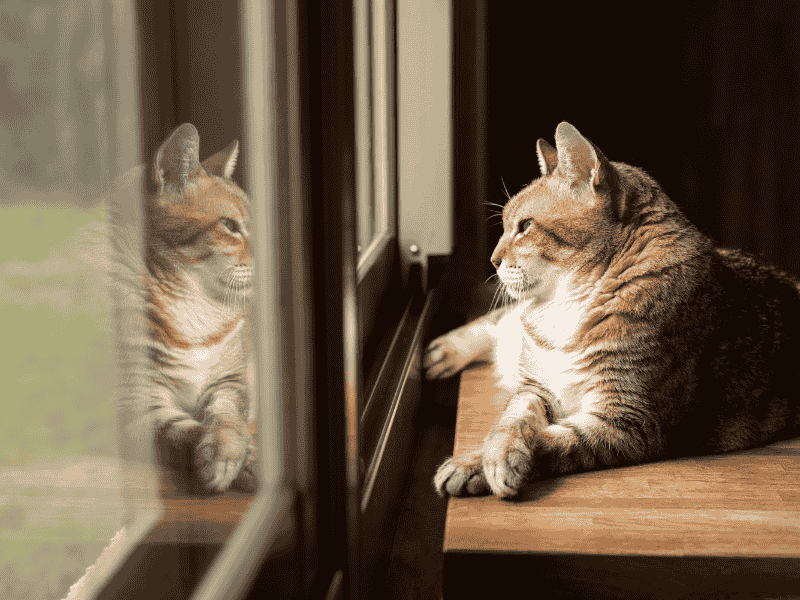The dreaded winter heating bill. Second only to the summer cooling bill in terms of electricity costs. That’s why we’ve created these tips on how to keep warm in the winter without busting your budget.
Your natural gas heating system uses gas as a heating source. However, in a central HVAC system, it also uses electricity for the blower that moves the hot air around your home. Implementing these energy efficiency tips can help save on both your gas and your electric bill.
12 Ways to Save on Winter Heating Costs
In addition to setting your thermostat properly for winter, here are our top 12 ways to save on winter heating costs for your home.
Find your energy leaks.
Perform a DIY home energy audit at the start of the heating season using our free checklist and guide. You will quickly find leaks in your home. These are places where you are losing heat from your home, and where the cold air is coming in. Common areas for air leaks include windows, doors and plumbing areas under your cabinets
Fill the gaps in your home
Don’t have time for a home energy audit? We’ll short-cut it for you. Use spray foam to reduce air leaks around utility cut-throughs for pipes (“plumbing penetrations”) under the sink. And make sure electrical outlets and wall plates on your outside walls are properly insulated.
Control humidity to feel warmer.
Dry winter air pulls moisture from your skin, making you feel colder. Instead of turning up the heat, use a humidifier to keep your home humidity between 30 and 50%. You’ll be able to keep your thermostat on a lower setting without feeling cold.
Consider sealing windows with plastic.
If you have single pane windows, consider sealing windows from the inside using commercially available clear plastic film and your hair dryer. This plastic will create a barrier to prevent drafts and heat loss through the windows. According to Energy.gov, leaky windows can account for 10 to 25 percent of your winter heating costs.

Seal windows with removable caulk.
Don’t like the look of plastic film on your windows? Instead, use removable caulk. Caulk around the edges of the window to create a tight seal. When spring comes around, simply remove the caulk and discard.
Check your electricity bill for potential savings.
If you are in a deregulated energy market, check your bill to see if you are on a month to month variable rate. If you are, you should shop for a cheaper electricity plan and lock in savings before the cold weather hits. Bonus: electricity contract rates are typically cheaper in the winter.
Dress for seasonal weather while you’re inside.
The goal isn’t to keep the house warm. The goal is to keep you warm. Dress for the season while you’re inside. If you’re cold, put on a sweater. Put on socks or slippers instead of your flip flops.

Block the fireplace flue.
An open fireplace flue is the equivalent of keeping a window open in your house. Even when closed, air will leak out around the flue. A fireplace flue blocker or a chimney balloon can effectively block the draft. It’s easily removed if you want to start a fire.
Reverse your ceiling fan.
Reverse your ceiling fan to turn clockwise, and run it on a low setting. This will pull hot air from the ceiling and push it down into the room. The low setting will keep air circulating without creating a cooling breeze.
Install an attic tent.
An attic tent insulates the attic access door from the rest of the house. This will ensure that warm air isn’t escaping into your attic, and that cold air isn’t entering your home.
Use a space heater (selectively).
A space heater can warm the room you’re in so you don’t have to heat the whole house. Make sure to shop for an energy efficient model that’s properly sized to the room. Look for a unit with a thermostat, auto-off timing feature and a sensor that shuts the unit off if it tips over.
Use the right winter thermostat settings for conservation & comfort.
The easiest way to stay comfortable in the winter without costing yourself a fortune is to control your thermostat settings. Here are our best thermostat settings for winter.
- If someone is at home in the daytime, 72° is a good start, but aim for 68°. Drop the temperature by one degree each week, to allow your body to acclimate to the lower temperature.
- If everyone is away from home in the daytime, or when you’re asleep at night, aim for a goal of 58° to 60°. Sounds cold, but once you’re cuddled under the covers, you’ll sleep great. Studies show it’s the best temperature for sleep.
Why are these settings important? According to Energy.gov, turning your thermostat back by 10° for the eight hours you are at work, and the eight hours you are asleep can save around 10% a year on your heating and cooling bills.

Winter Heating Safety
With winter heating comes the need for winter heating safety. During the heating season, please be aware of these safety precautions around your home.
Carbon Monoxide Detector – With your home tightly sealed against drafts, you can run the risk of carbon monoxide build-up. Make sure to have a carbon monoxide detector in your home, in addition to fire and smoke detectors.
Space Heaters – Space heaters account for 4 out of 5 heating fire deaths, according to the National Fire Protection Association. If you have an older model, replace it with one that has an automatic shut-off. And keep any flammable materials outside a 3-foot radius of the heater. Lastly, never leave a child alone with a space heater.
Plastic Window Seal — When using plastic film window seal, don’t seal windows in the bedroom or other windows that may need to be opened quickly in the event of a fire.
Chimney Cleaning and Inspection – A chimney sweep (yes, like in Mary Poppins) can check the structure of your flue and chimney. They can also remove any combustibles, like creosote, a tar-like substance created when you burn wood. Your chimney should be inspected and cleaned annually, especially if you use your fireplace frequently.
For more tips, check this article from Rent.com on budget heating.
